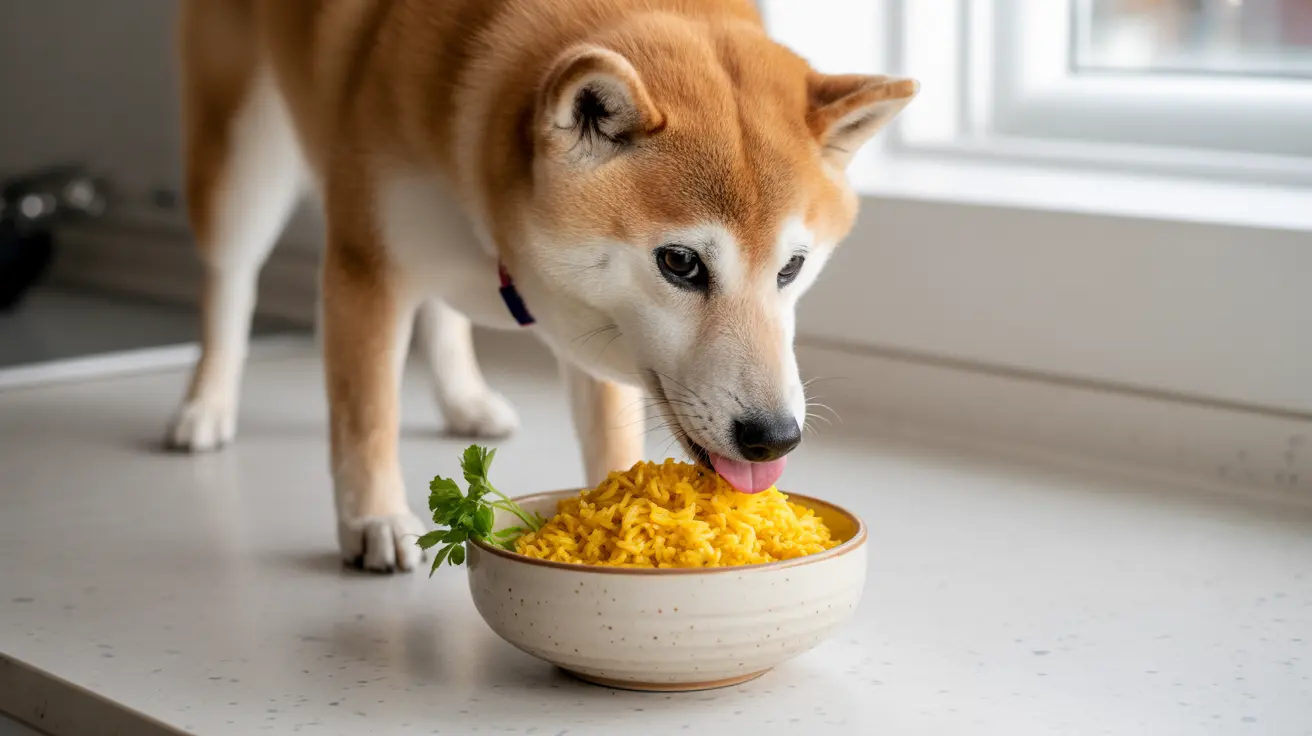Understanding Saffron and Its Effects on Dogs
Saffron, derived from the Crocus sativus flower, contains compounds like safranal, crocins, and picrocrocin that can be harmful to dogs. While small amounts found in typical cooking may not cause immediate severe reactions, larger quantities can lead to serious health issues.
The threshold for toxicity in dogs is relatively low - approximately 20 grams of pure saffron could be lethal. Even though saffron rice typically contains much smaller amounts, it's essential to err on the side of caution.
Common Dangerous Ingredients in Saffron Rice
Beyond saffron itself, traditional saffron rice recipes often include ingredients that are toxic to dogs:
- Garlic and onions (causes dangerous anemia)
- Bay leaves (toxic to dogs)
- High sodium content (potentially harmful)
- Butter or oils (can cause digestive issues)
- Various spices (may trigger adverse reactions)
Health Risks and Warning Signs
If your dog consumes saffron rice, watch for these symptoms:
- Vomiting and diarrhea
- Lethargy and weakness
- Loss of appetite
- Abdominal pain
- Changes in behavior
- Pale gums (if garlic/onions present)
Safe Alternatives for Dogs
Instead of saffron rice, consider these dog-friendly options:
- Plain white rice (cooked without seasonings)
- Brown rice (in moderation)
- Commercial dog food with rice
- Veterinarian-approved rice alternatives
When to Contact Your Veterinarian
Seek immediate veterinary care if your dog shows any adverse reactions after consuming saffron rice. Quick intervention can prevent more serious complications, especially if toxic ingredients like garlic or onions were present in the dish.
Frequently Asked Questions
Can dogs safely eat saffron rice with small amounts of saffron?
No, while small amounts might not cause immediate severe reactions, it's best to avoid feeding dogs saffron rice altogether due to potential risks and the presence of other harmful ingredients.
What are the toxic ingredients in saffron rice that can harm my dog?
The main toxic ingredients include saffron itself, garlic, onions, bay leaves, and excessive salt. These can cause various health issues ranging from digestive problems to severe anemia.
What symptoms should I watch for if my dog eats saffron rice?
Monitor for vomiting, diarrhea, lethargy, loss of appetite, abdominal pain, and changes in behavior. If you notice any of these symptoms, contact your veterinarian immediately.
Is plain cooked rice a safe alternative to saffron rice for dogs?
Yes, plain cooked rice without any seasonings or additives is safe for dogs in moderation and can actually help with digestive issues when recommended by a veterinarian.
What should I do if my dog accidentally consumes saffron or saffron rice?
Monitor your dog closely for any adverse reactions. If you notice any concerning symptoms, contact your veterinarian immediately. Save any packaging or recipe information to help determine potential toxicity risks.
Conclusion
While saffron rice might be a delightful dish for humans, it's best to keep it away from your canine companions. The combination of saffron and common recipe ingredients poses unnecessary risks to your dog's health. Instead, stick to veterinarian-approved foods and treats specifically formulated for dogs.
If you're looking to incorporate rice into your dog's diet, plain, unseasoned rice is the safest option - but always consult with your veterinarian before making any significant changes to your pet's diet.






